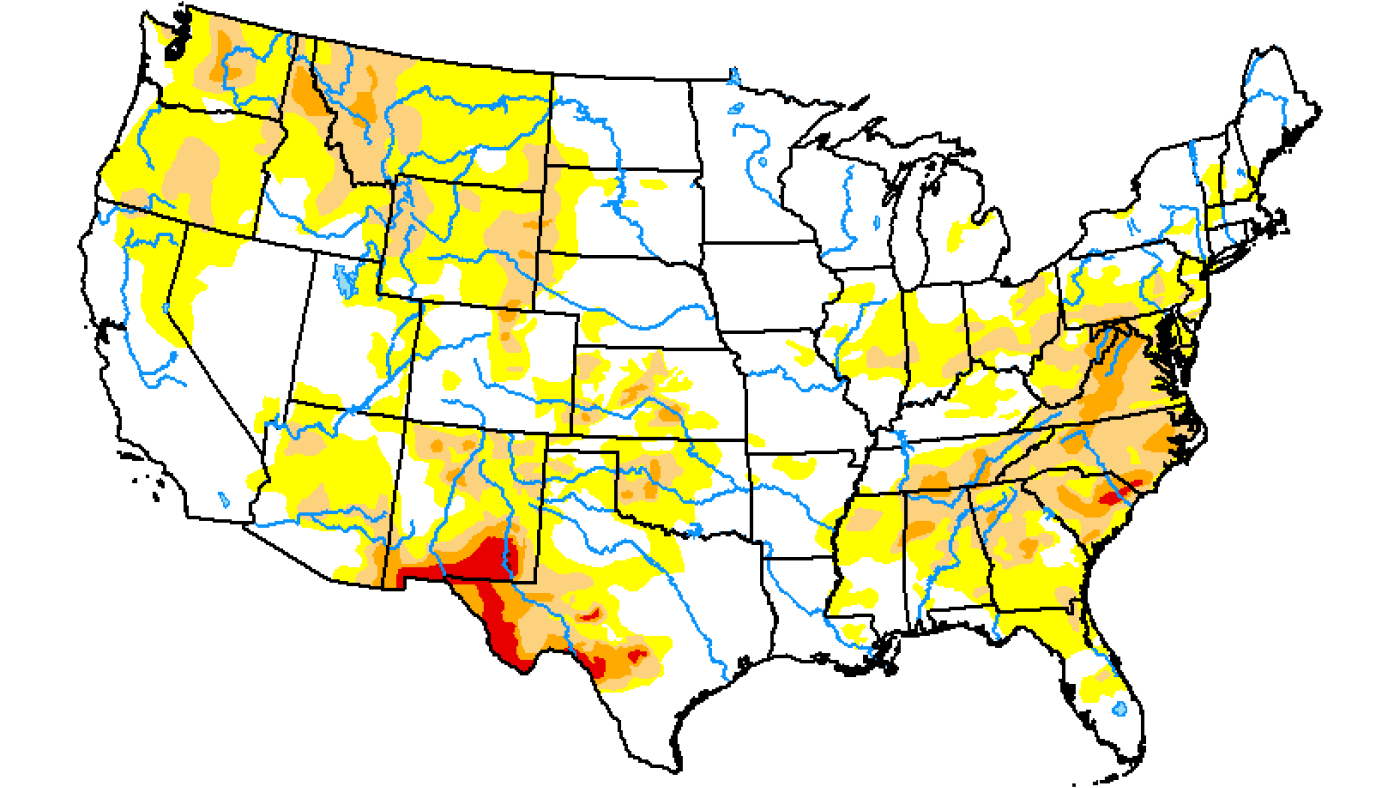Reasonably good news for most crop growing areas regarding drought coverage over the past month. That’s according to USDA Meteorologist Brad Rippey, and that is despite an increase in overall drought coverage on July, 2, after a four year low was reached in mid-June, Rippey starts with 7% of the US corn crop drought, 9% of the soybean production area…
“…in drought, compared to June 11 totals of 2% of corn production area, 1% of bean-growing area in drought.”
So not a huge concern yet, but certainly watching creep of drought into parts of the central and eastern corn belt.
A mixed bag of drought coverage is found with Southern grown crops.
“Cotton actually saw its minimum coverage and drought a little bit earlier, back in late May. Just 5% of the US cotton production area was in drought at that time. Since then, we have seen modest increases, primarily in the southeastern US, pushing the overall cotton production area in drought to 90% by July 2. We’ve also seen a pretty dramatic increase in the peanut production area in drought. In recent weeks, we had 1% of the peanut production area and drought on June 11 that is now 29% on July 2. One southern crop that has escaped drought to this point is rice. 0% of the rice crop and drought on June 11, that has increased to 1% by July 2.”
Just 6% of the spring wheat crop is covered in drought at July’s start. Turning to commodities in drought coverage.
“The southeast driving a lot of this increase in the hay production area and drought, 6% of the production area and drought on June 11, that is nearly tripled to 17% by July 2, the US cattle inventory and drought nearly doubling between June 11 and July 2 from heat to 14%.”
Rippey acknowledges, regarding many of the crop and commodities and drought percentage numbers from the July 2 report,
“Historically, these numbers are relatively low, but we are carefully monitoring its overall increase in coverage of dryness and drought since about the middle of June.”
Image courtesy US Drought Monitor


